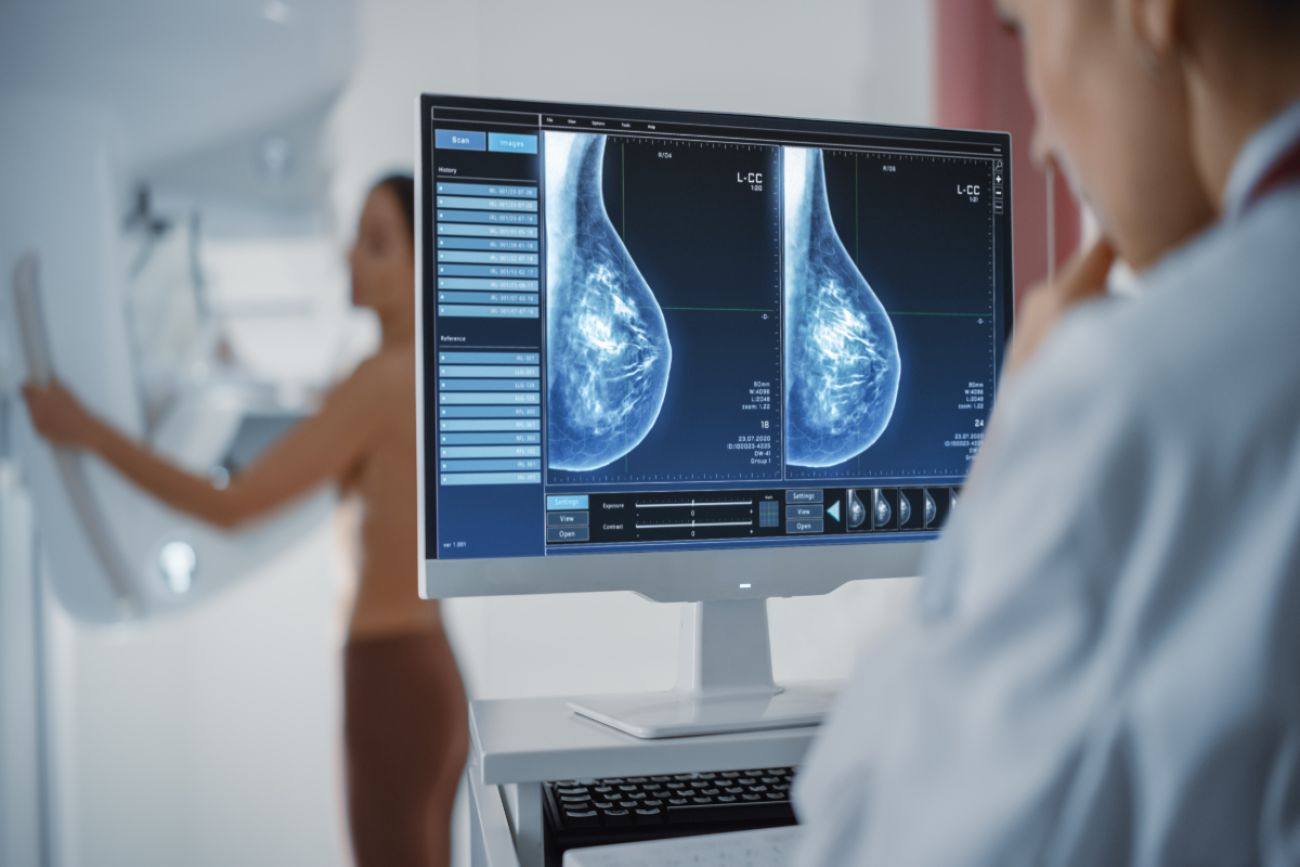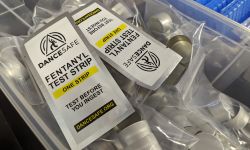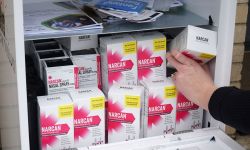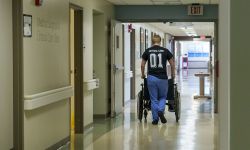Panel says breast cancer screen should start at 40, but some have qualms

- An increasing number of women under 40 are being diagnosed with breast cancer
- The U.S. Preventive Services Task Force advises women to get screened beginning at 40, rather than 50, the current guidance
- The task force’s recommendations are a driving force in insurance coverage.
Women should be screened for breast cancer starting at 40, rather than at 50, according to a new draft recommendation by the U.S. Preventive Services Task Force.
And women should continue to receive a mammogram every other year until age 74, according to the draft guidance.
That’s a shift from current guidance from the Preventive Services Task Force that leaves it to women in their 40s to make their own decisions about screening after talking with their doctor.
The new guidelines are “in line with probably what we're already doing,” said Dr. Carrie Leff, internist and pediatrician at Henry Ford Health. “It probably doesn't change (the) standard of care very much, because most doctors are really already recommending breast cancer screening at age 40.”
The task force was less than adamant on its guidance, published last week, offering it only a 'B' grade. That means, rather than a strong recommendation of a significant benefit, the task force found “high certainty that the net benefit is moderate or … moderate certainty that the net benefit is moderate to substantial.”
Related:
Michigan is short on Adderall, penicillin, cancer drugs amid supply woes
Michigan expert on history’s pandemics reflects on end of COVID emergency
FDA panel approves over-the-counter birth control, despite some concerns
In other words, “the balance of benefits and harms cannot be determined,” the task force wrote.
The task force is a congressionally authorized medical panel that offers clinical guidance for health care providers. Its recommendations are closely followed by physicians because they come from an independent panel based on careful research of evidence; in this case, newer research showing more people in their 40s being diagnosed with breast cancer.
The panel’s recommendations also drive what is covered by insurance and what is not. As it stands now under the Affordable Care Act, most insurers must cover mammograms every other year starting at age 50, or as early as 40 for those at high risk of breast cancer.
The change could mean “19 percent more lives being saved,” according to the task force.
The panel weighed the benefit of catching and treating breast cancer early against the possibility that earlier screening will lead to false positives, unnecessary biopsies and scans, including for cancers that would not otherwise need treatment, and the anxiety at hearing the very words “breast cancer.”
The more false positives, the more likely a patient will abandon regular screening, said Dr. Otis Brawley, former chief medical officer and executive vice president at the American Cancer Society and a former Detroiter.
An estimated 1 in 7 cases of screen-detected cancers are “overdiagnosed” among women 50 to 74, according to a study published last year in the Annals of Internal Medicine. Though the results were somewhat oversimplified, according to the study’s author, the results reinforced that not all breast cancers are the same.
And that’s the rub — weighing the benefits of detection against the risks of overdiagnosis — when it comes to determining the frequency of cancer screening, Brawley said.
He was among those who pushed successfully to trim back routine screening for prostate cancer through PSA (prostate-specific antigen) blood tests.
“The purpose of screening is not to detect cancer, it’s to prevent death, and that’s very important,” he told Bridge Michigan on Monday.
Now a professor of oncology and epidemiology at John Hopkins University, Brawley also helped change the American Cancer Society’s recommendation for breast cancer screenings in 2015 that moved screening recommendations from 40 years to 45, with the option to switch to biennial screenings at 55
(The American College of Radiology, in contrast, recommends that breast cancer screenings start at age 40.)
Nonetheless, Brawley said he agreed with the recommendation to again change the guidance.
One reason is that screening has become more precise, he said, allowing doctors to better discern the most aggressive tumors and appropriately calibrate treatment options. And breast cancer has slowly climbed in recent years among women in their 40s, likely because of its links to obesity, he said.
The revised recommendations may be particularly helpful to Black women, the task force said. That’s because studies have shown Black women are more likely to be diagnosed with advanced cancer than other groups. And this group is 40 percent more likely to die from breast cancer compared to white women, according to data provided by the task force.
Other researchers recently called for Black women to be screened earlier than white women. In a study published in April, the researchers, citing data involving more than 415,000 breast cancer deaths, concluded that a “one-size-fits-all” screening recommendation “may not be fair, equitable, or optimal.”
Writing for the peer-reviewed Journal of the American Medical Association, they recommended Black women start screening at age 42 years, whereas white women should start at 51.
But the U.S. task force did not make that distinction in its recommendation, which Brawley said was the right call. Differences in cancer outcomes are based on social determinants — less access to care, a lack of quality screening and social factors that predispose Black women to breast cancer, he said.
The key to closing disparities, he said, is equal access to quality screening and the best care.
“We have several studies to show that equal screening and treatment for black and white women mean equal outcomes,” he said.
More research is needed to determine whether women with dense breasts should have additional screening with breast ultrasound or MRI, because mammograms may be less reliable for them, according to the task force. Also needed: additional data on the benefits and harms of screening in women older than 75.
Whatever the recommendation by the federal panel, it’s critical that women talk with their doctors to weigh their own benefits and risks of screening, Brawley and Leff said.
The best care, Leff said, is in “stratifying” patients for screening based on their risk factors “and not treating all women the same,” Leff said.
The task force said it is accepting comments on its draft recommendation until June 5.
See what new members are saying about why they donated to Bridge Michigan:
- “In order for this information to be accurate and unbiased it must be underwritten by its readers, not by special interests.” - Larry S.
- “Not many other media sources report on the topics Bridge does.” - Susan B.
- “Your journalism is outstanding and rare these days.” - Mark S.
If you want to ensure the future of nonpartisan, nonprofit Michigan journalism, please become a member today. You, too, will be asked why you donated and maybe we'll feature your quote next time!








